Genoa Hauling down procedure
The first characteristic of our AMEL is the disconcerting ease with which the 4 sails are furled and unfurled quickly and effortlessly. These systems make the boats ultra-safe and allow a great autonomy. We are all convinced here!
The counterpart of this maneuver ease is that the way to proceed to lower the sails is not always clear to you. Often, only the genoa and the staysail are removed for wintering while the mainsail and mizzen sail remaining in place carefully furled in their mast. This article proposes you to detail how to lower the genoa. Handling takes about 30-45 minutes. The procedure is the same for the Amel 54, 55, 64 and for the staysail. The only variable being the weight of the sail, which reaches about 70kgs on an AMEL 64. This makes it difficult to manipulate and powerful sail.
Preparation:
To make things easier for you, first choose a windless day. Or at least a very light wind coming from the back of the boat. Get yourself:
Of a winch handle
Of an extension of halyard sufficiently solid, fine and long (45m for an AMEL 55). 6 mm will fit perfectly. Thicker, the knot you make at the end of the halyard extension will not pass through the mast opening or into the sheave at the masthead.
Possibly an electrician scotch which will make the halyard / halyard extension more streamlined and easy to get through the mast.
At least one motivated team member!
Procedure:
1- Prepare your halyard extension:
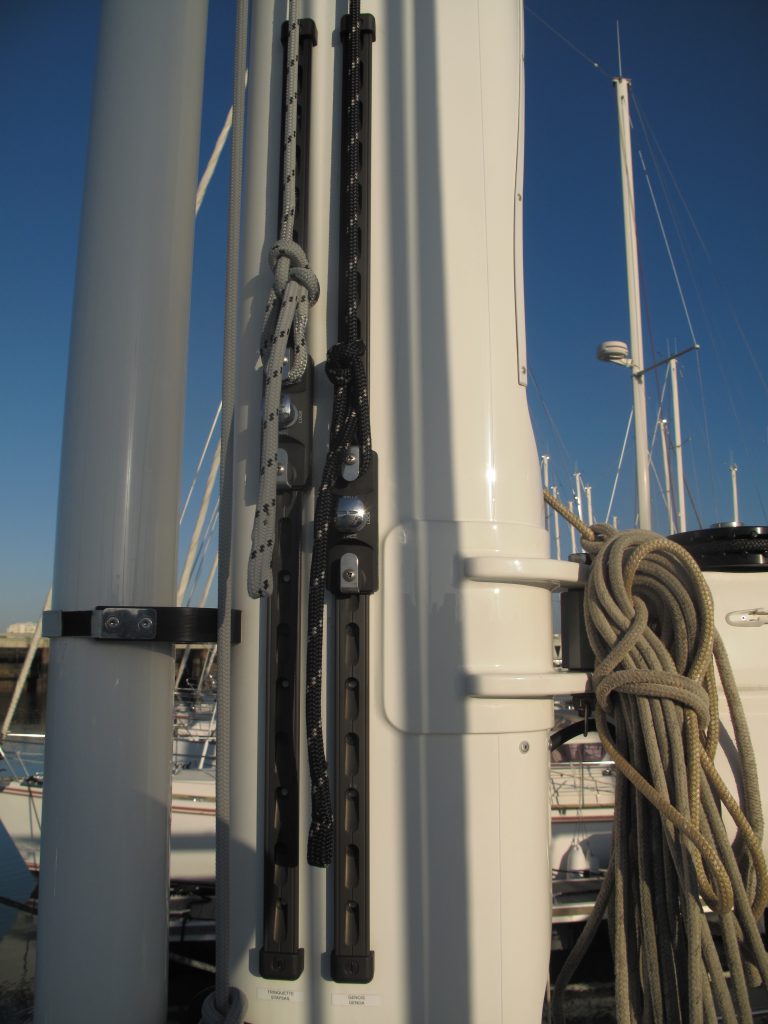
Picture 1 : The rail of the genoa halyard, on left on the picture
To do this, you need to remove the halyard from its rail on the mast, undo the knot that fixes it on the traveler and then tie your halyard extension to the end of the halyard.
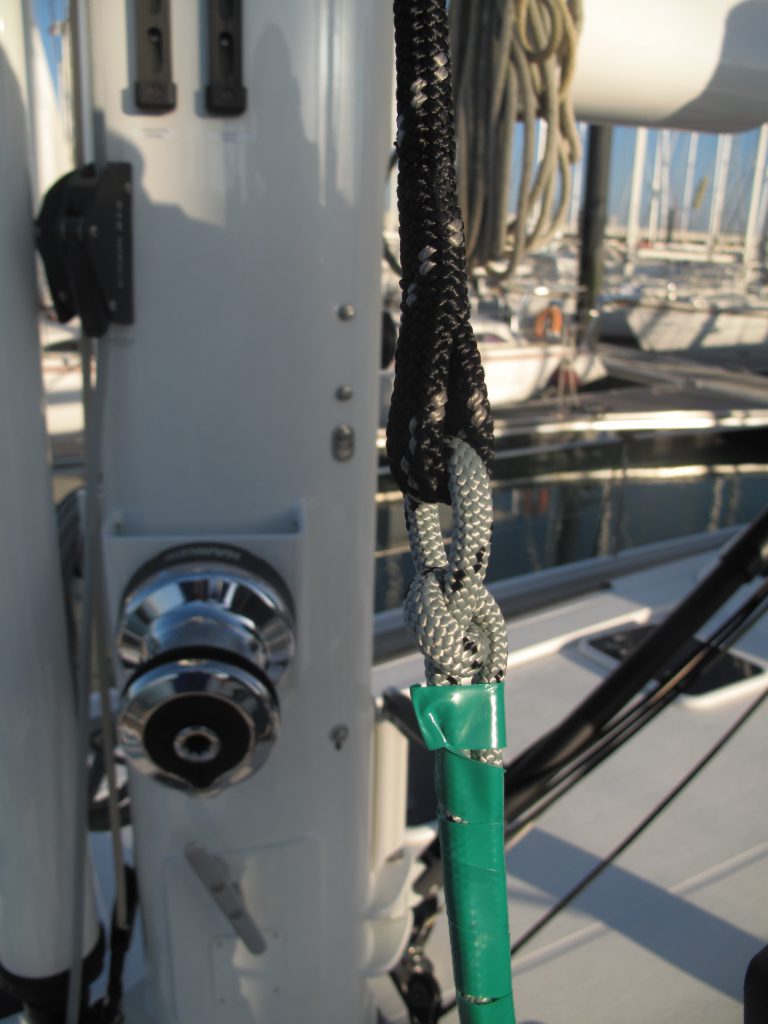
Photo 2: The halyard extension here is a bit thick, a simple half-key-knot and several generous rounds of electrician adhesive will do the job.
Then block the halyard to the winch, ready to haul down.
2- Unfurl the genoa:
Under the wind of the boat, sheet sufficiently tensionned so that the genoa does not fall in the water when you will haul it down. This is also the last time to rinse and dry your sail before storage if it has not already been done.
3- Haul down :
Start by undoing the knot of the dyneema rope, wich securizes the Genoa to the tack.
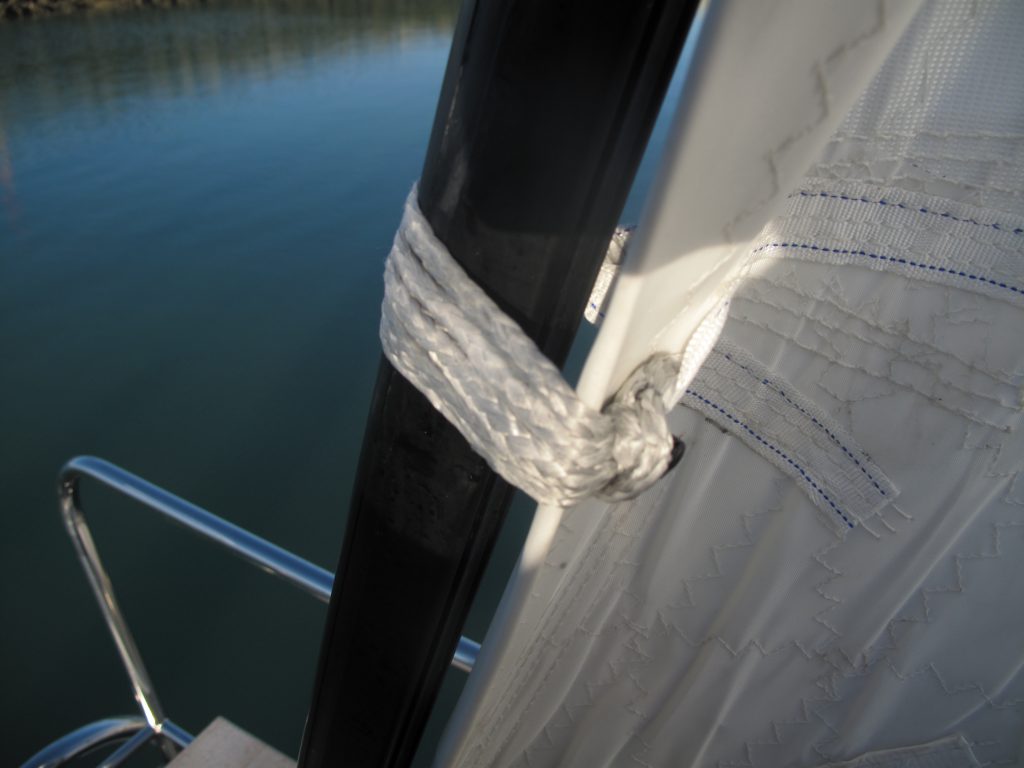
Photo 3: Dyneema rope securing the bottom of the genoa. This part is in fact not in the rail. The rope makes is here to avoid the genoa from coming out of the rail in navigation.
Then undo the tack and pull the bottom of the genoa out of the rail so that it can then haul down when you release the halyard.
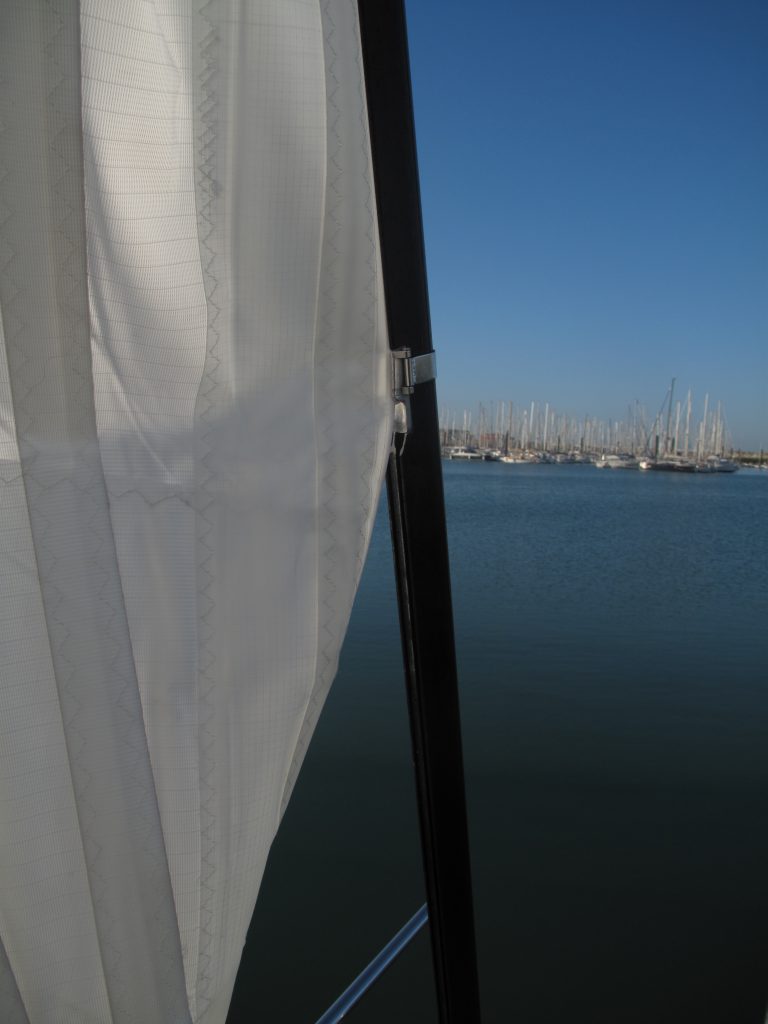
Photo 4: the bottom of the genoa out of the rail
All you have to do now is to let the halyard go down in order to lower the sail. Be sure, however, to guide the genoa by holding the sail down, and make sure that the knot connecting the halyard to the halyard extension passes well into the mast opening without getting caught.
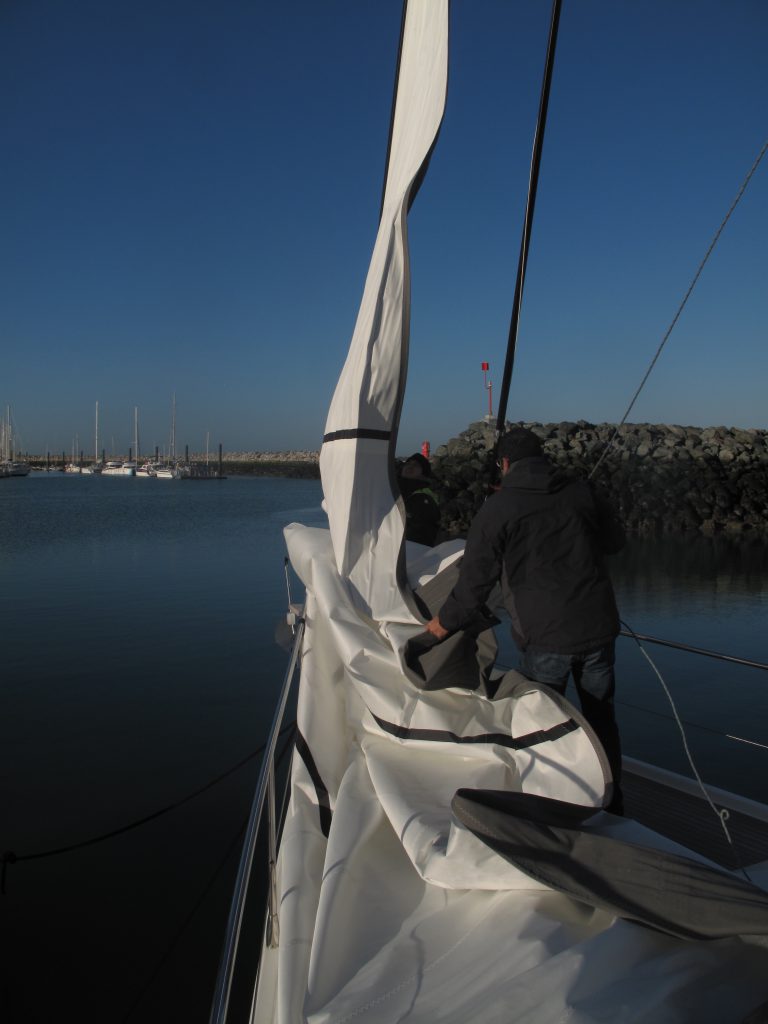
Photo 5: The crew member holds the leech of the genoa in order to bring the sail inside the boat throughout the hauling down.
With the sail now on the deck, you can disconnect it from the halyard point by loosening the dyneema tip that connects them.
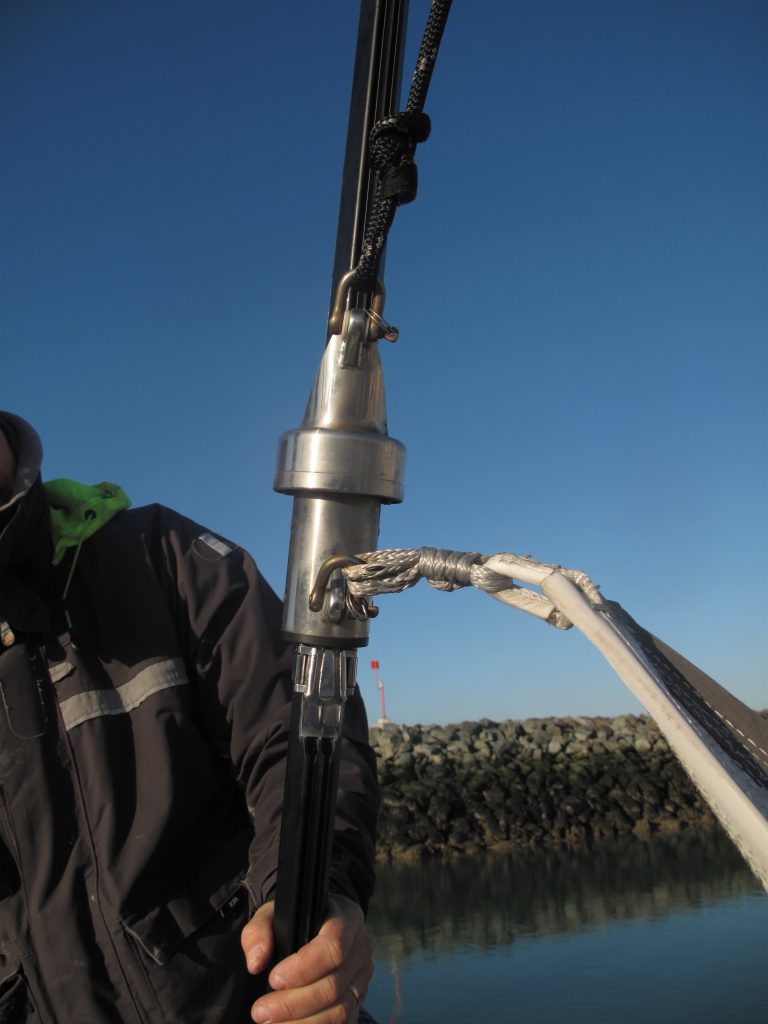
Photo 6 : the halyard point
4- Fold the sail:
Remove the sheets beforehand.
This step is a bit complicated without training because a genoa is big and heavy. An easy solution when you are moored parallel to the pontoon is to manipulate the genoa in such a way that the foot of the sail is on the dock side and the rest of the genoa on the other side of the boat passing over the boom of the main sail, that will smooth it. You can then fold your sail on the dock (clean). Not everyone gets a catway! You will then have to do the same, but on a gangway.

Photo 7 : the sail beeing folded

Photo 8 : The sail folded !
 Photo 9 : Sail folded, furled, and ready to be stored in its bag.
Photo 9 : Sail folded, furled, and ready to be stored in its bag.
5- Halyard point storage:
During the winterization, the ideal thing to do with halyard is to remove it, and replace it with the halyard extension. This will prevent the halyards from getting spoiled during winter. You will need to open the shackle on which the halyard is attached and then use your halyard extension to remove the halyard. Just make sure to fix the extension away from the mast so that it does not make noise by beating on it during windy days. Also take special precautions to avoid dropping your halyard extension from the top of the mast, otherwise you will have to climb to the masthead to reinstall an halyard … a fastidious maneuver!
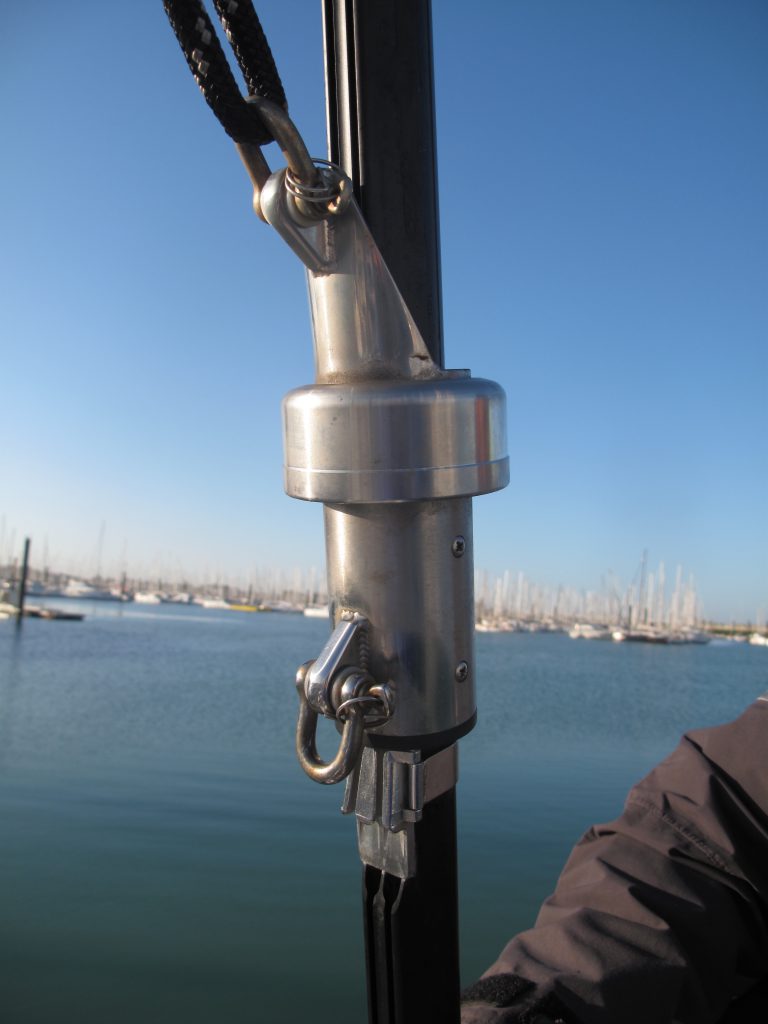
Photo 10 : The shackle on top joins the halyard and the halyard-point. Notice the ring securing the shackle.





